Classic Massey Ferguson 200 Series collection
Posted by Chris Graham on 24th June 2022
Willie Carson meets Wesley Rea and his superb collection of classic Massey Ferguson 200 Series tractors that are still working today.
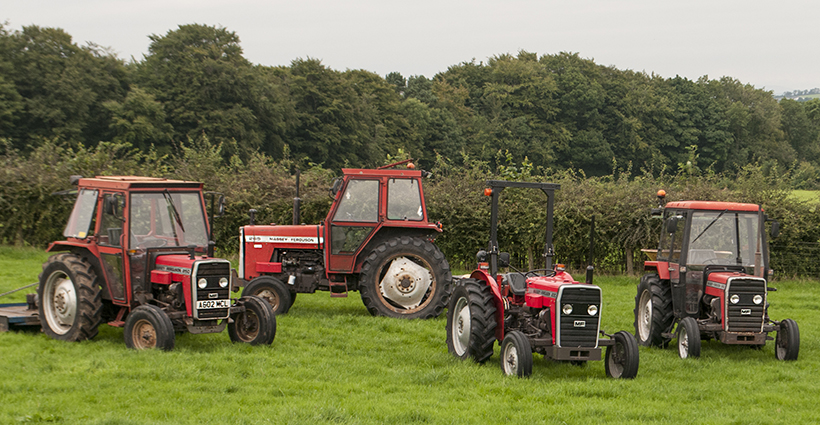
Wesley Rea’s four-tractor Massey Ferguson 200 Series collection; all still work for their livings on the family farm in Northern Ireland.
The 100 Series of Red Giant tractors was a huge success for Massey Ferguson. Now there’s an understatement! With power outputs ranging from 30 to 75hp, there was a model suited to every operation, no matter what the scale of the farming enterprise. What’s more, the versatility of these machines made them equally popular with arable and livestock farmers.
From the launch in 1964, the combination of reliability, power, lugging ability, ruggedness, flexible transmission options and the well-respected Ferguson System, attracted buyers from all parts of the agricultural spectrum. The arrival of the Super Spec 8 Series broadened the appeal of the range, introducing more power and versatility to each of the original, 1964 debutants so that, during the following decade, Massey Ferguson vied with those models from the ‘blue corner’ for the sales statistics crown.
Base-model status
The arrival of the MF 500 Series, with its superior cab delivering both improved safety and comfort, relegated the 100 Series to base-model status but, for the cost-conscious, mixed farmer with moderate acreage, there was still a place for the MF 135, MF 165, MF 168 or the mighty MF 188 in their operations. Therefore, these stalwarts of the agricultural industry were destined to be seen ploughing, planting, sowing, mowing, harvesting and hauling across the countryside for many more years.
By the end of the 1970s, the MF 500 Series was starting to look outdated, and was replaced by the MF 600 range, offering more modern features and greater driver comfort. However, the push towards producing tractors aimed at those with larger farms risked alienating generations of loyal customers who valued Ferguson’s original vision of affordable modernisation for those employed in all aspects of world agriculture. Massey Ferguson needed a range of tractors to replace the iconic Red Giants and what better to follow the 100 Series than the 200 Series.

Wesley with his MF 230; the second tractor to arrive in his collection.
During this period it was still common for small and medium sized, mixed farms to rely on an MF 165 or MF 168 and an MF 135 and even a MF 35 to power machinery for a wide variety of operations in the fields and around the yard. Versatility, reliability, longevity and value for money were as important as power output on many holdings, and this was reflected in the virtues of the new models.
One for all
With power outputs ranging from 33 to 88hp, there was a 200 Series tractor model for every job on the farm. The modern styling bore a strong resemblance to the MF 500 and MF 600 Series tractors, with the hard-nosed bonnet styling, the distinctive black grille and the black-on-silver decals. But below the fresh exterior there was a tractor developed from sound principals that farmers had grown to trust.
The first models to appear, in 1979, were the MF 240 and the MF 265. Massey Ferguson described the MF 240 as ‘the safest investment you will ever make’, adding that it was already the market leader, beating the combined sales figures for the next three most popular competitors in the sector.

The MF 240 needed little more than a thorough clean, two new tyres, a good service and a replacement grille (the original had rusted away because the tractor had been parked every night in an open-fronted turf shed).
Potential purchasers were assured that the 45hp Perkins AD 3.152 engine wouldn’t let them down, and would keep running costs to a minimum. Farmers who were familiar with this power plant had known this for the previous two decades. Matched to the standard, eight-speed transmission – or the Multi-Power 12-speed option – farmers were promised that the ‘right gear’ was always available.
Since Harry Ferguson had developed the hydraulic system of implement control to which he put his name, Banner Lane tractors had remained ahead of the game and, while others had tried to copy the principles of the design, Massey Ferguson’s engineers had refined it into the ‘Advanced Ferguson System’. This incorporated the Mk.III linkage pump, which boasted increased durability, reliability and productivity, plus a new selector valve that gave immediate flow to the spool valves.
Advanced package
The optional Pressure Control completed a very advanced package of hydraulic features for such a compact tractor. This system used a special coupler attached to the lower links, which transferred weight from trailed implements onto the tractor’s driving wheels. In OECD tests, this system delivered an increase in work rate greater than 50%, due to reduced wheel slip.
Equipped as standard with a ‘quick-detach’ cab, sound-proofing and a sprung seat, the MF 240 provided a pleasant place to work. Its removable grille panel provided easy access to the radiator and air filter, making routine servicing convenient. Also, MF Leasing services ensured that paying for all this was as painless as possible.

The view from the MF 240’s driver’s seat.
Wesley Rea experienced the benefits of farming with Massey Ferguson tractors as he grew up on the family farm in Northern Ireland. “My father milked 40 cows and kept sheep,” he explained. “My grandfather’s first tractor was a TE-A 20, with a Perkins P3 diesel engine conversion. My father bought a secondhand, swept-axle MF 135 which carried out the main tasks on the farm. It mowed and tedded hay, spread dung, sowed fertiliser and did the loader work. Then, in 1985, he bought a fresh, secondhand MF 240, and it was on that tractor that I learned to drive, towing the trailer up to the field as the hay bales were being loaded.”
First tractor
Wesley left school and went to work as a TV engineer then, later, as a data systems specialist. But, having built a house near the yard, he never lost his connection with his early life on the farm. He bought his first tractor – a scruffy example of an early MF 135 with a Duncan cab – and used it in his spare time for hauling and sawing fallen timber from the woodland which borders the family farm.
By 2011 he’d replaced the 135 with an MF 240, fitted with a Cabcraft cab. This was a local tractor that had originally come through John McElderry’s dealership in Ballymoney, Co. Antrim, and spent its working life on a small farm. After four years, Wesley had the opportunity to buy his current MF 240, equipped with a Duncan cab and, since his son was showing an interest in tractors, he thought that the full back window would offer better protection.
This tractor was bought from William Bell’s dealership in Co. Tyrone by an elderly farmer to work on his small farm performing both agricultural duties and ‘social, domestic and pleasure’ transport. Once back in Wesley’s yard, the tractor needed little more than a thorough clean, two new tyres, a good service and a replacement grille (the original had rusted away because the tractor had been parked every night in an open-fronted turf shed).
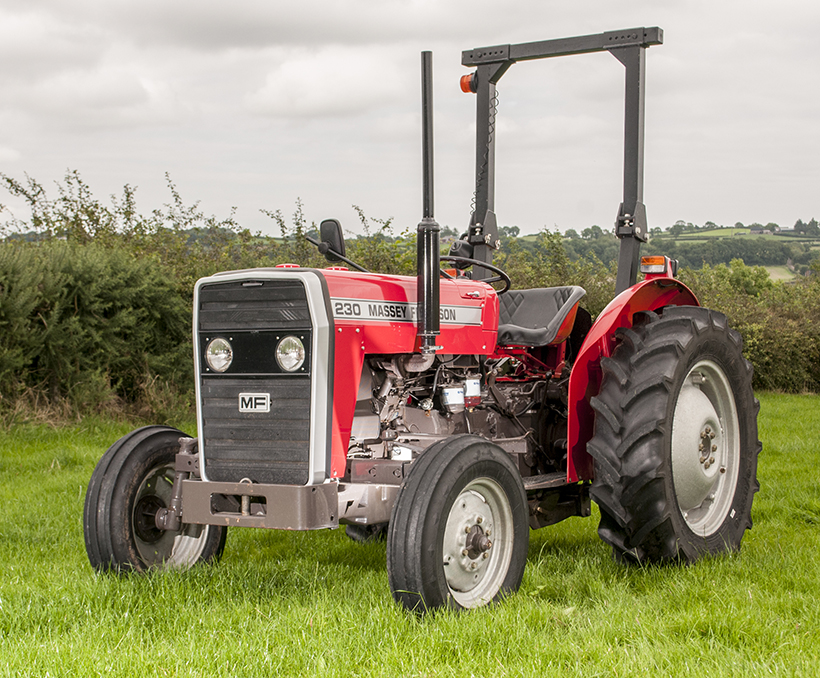
The MF 230 only had 4,000 hours on the clock when bought. It was mechanically very sound so, other than respraying the red tinwork, little else was needed.
The next MF 200 Series tractor to appear in Wesley’s yard was an MF 230. This model was aimed at those for whom the exceptional versatility of the MF 240 wasn’t required. While it too was powered by the well-respected Perkins AD 3.152 engine, the MF 230 was derated to 38hp; ample for duties in market garden enterprises, for green keeping, municipal park management or yard work where light weight and manoeuvrability are important characteristics.
Cab swap
Wesley’s MF 230 began life on a small farm in the North of England. The farmer already had a 135 with a yellow Duncan cab when he added the MF 230 to his fleet. Needing a small tractor to access low buildings, it made sense for him to swap the cab – complete with the 135’s square mudguards – onto the new MF 230, fit the roll bar from the MF 230 onto the 135 and use the older tractor for work in the low sheds.
The MF 230 was later sold to a stable yard where it was used to keep the paddocks topped. Wesley’s brother, Derek, found the tractor in a dealer’s yard in Co. Antrim, from where it made its way to the Rea family, complete with the yellow Duncan cab and square mudguards, and wearing a set of turf tyres. “The first thing we did was to remove the cab, fit a roll bar and agricultural tread pattern tyres. There were only 4,000 hours on the clock, and it was mechanically very sound so, other than respraying the red tinwork, we’ve done very little to it,” Wesley explained.
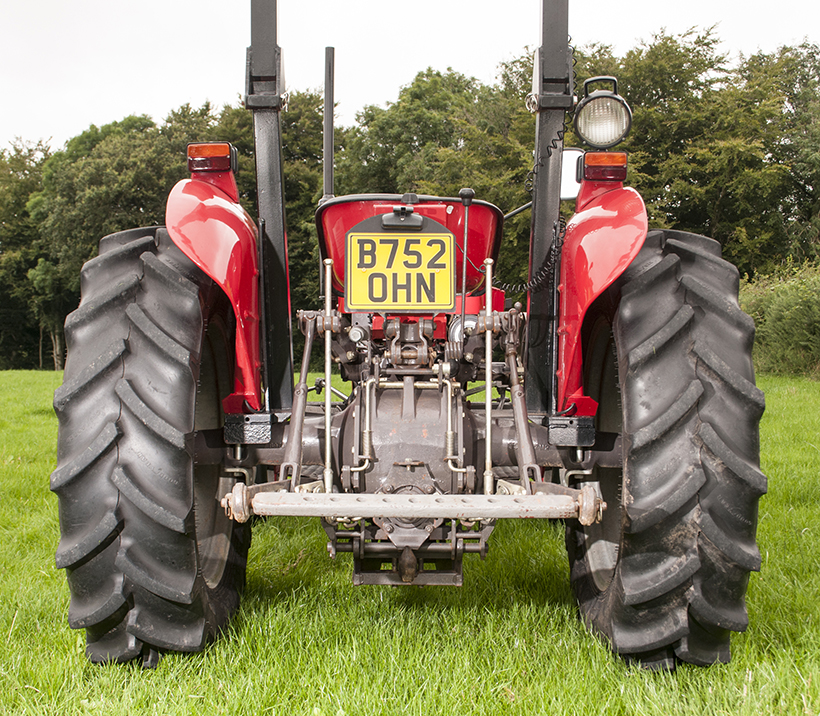
Much of Wesley’s MF 230’s working life was spent on a small farm in the North of England, where it was fitted with a yellow, Duncan cab.
The launch of the MF 250 followed, extending the capabilities of the new range. It was fitted with the 47hp AD 3.152S engine which had powered the MF 148 and MF 550 models and, like its well respected predecessors, the MF 250 was more than just a tweaked MF 240. It, too, had larger, 32in rear wheels paired with 19in fronts which, combined with the 6in longer wheelbase, gave the tractor a more purposeful stance. Where the MF 230 and MF 240 made do with 16 litres/min hydraulic flow at 176 bar (2,500psi) maximum pressure, the bigger brother provided an impressive 28 litres/min. Independent PTO and optional 4WD added further to the MF 250’s impressive CV.
Online find
Wesley’s MF 250 was an online auction purchase. It had been used on a hobby farm in the West Country but, since the land was quite steep and the tractor was equipped with the optional Multi-Power, the owner felt uneasy with the lack of engine braking when going downhill in ‘Multi-Power low’.
Wesley paid a £200 deposit at the end of the auction and the balance after he’d gone across the water to arrange shipment home. He had little to do to his latest purchase. “I gave it a good service, replaced the battery, fixed a few oil leaks and fitted the loader brackets to make it more versatile. That was about it.”
The mid-range tractor in the 200 Series was the MF 265. This popular model was powered by another legend from the Perkins factory, the A4.236. Capable of producing 90hp in turbo-charged spec when it was installed in the MF 698T, it was always going to be a reliable unit in its detuned, 60hp state, as it appeared in the MF 265. With 170lb-ft of torque at 1,200rpm and the 12-speed Multi-Power transmission as an option, there was power and lugging ability for a wide variety of tasks from ploughing to grassland work, yard duties and road haulage. The 1982 list price for the MF 265 was £8,990, a saving of £1,390 when compared to the similarly-powered MF 675.

Wesley’s MF 250 was an online auction purchase. It had been used on a hobby farm in the West Country and is fitted with Multi-Power.
Describing the background and condition of his four-cylinder 200 Series tractor, Wesley says: “Again, the 265 was an online auction purchase. The original dealer’s sticker was still on it, so I made contact and spoke to a fitter who remembered looking after the tractor in its early days. It had previously belonged to Cambridge University Agricultural College, where it had worked in various departments, including the plant-testing unit, before it finished on a straw-chopper.
Work required
“I bought it from a dealer with 3,490 hours on the clock. The steering had been refurbished previously, but needed further attention. The tractor also required a new clutch and repairs to the independent PTO brake. The alternator was re-conditioned, the wiring had to be tidied and it needed new rear tyres. But the tinwork wasn’t touched.”
Wesley’s brother still farms beef cattle on the family farm, giving Wesley the opportunity to put his four, capable Banner Lane icons to work. The MF 240 sows fertiliser with a Vicon steel bodied ‘wagtail’, and the MF 250 carries out the loader work. The MF 265 is a good fit for a Massey Ferguson DM 107 mower which cuts about 15 acres for round bale silage. They also make some hay on the farm, with the MF 250 mowing using an MF 70 drum mower, and the MF 230 tedding with a PZ Haybob.
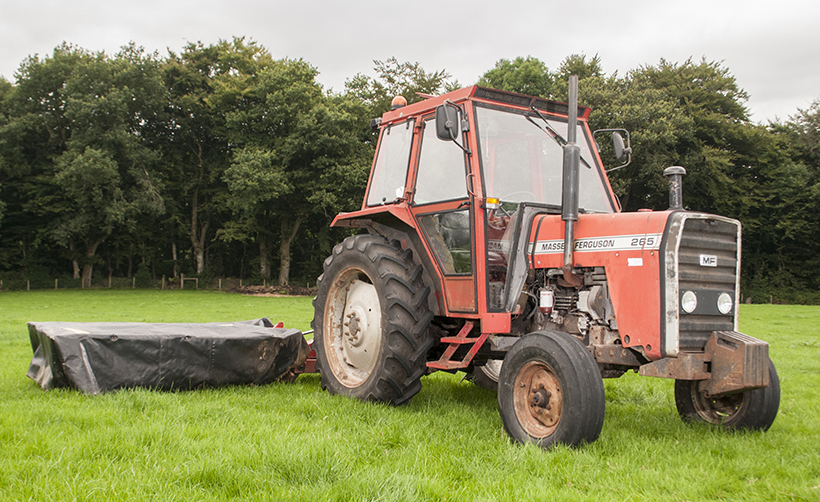
Wesley bought the MF 265 with 3,490 hours on the clock. The steering had been refurbished previously, but needed further attention. The tractor also required a new clutch and repairs to the independent PTO brake.
The MF 240 carries round bales back to the yard with a three-point linkage bale lifter. Light, manoeuverable and without the height restrictions of a cab, the MF 230 is ideal for bringing fallen timber along the tracks through the wood, so that even the smallest model of the range can find work. When there’s grassland reseeding to be done, the ploughing is carried out by the MF 265, with a three-furrow Kvereneland, or the MF 240 with a two-furrow Kverneland. What’s more, any of the smaller tractors can be found pulling the grubber, the peg harrow or the roller.
The MF 200 Series was a sales success both at home and abroad and many examples, after serving their original owners in the UK and Ireland well, have found new lives in developing world agriculture. In time, these once common tractors may be seen less frequently, making them more collectable. Perhaps, in the future, space will be made in Wesley’s shed for the popular MF 290…
This feature comes from the latest issue of Classic Massey & Ferguson Enthusiast, and you can get a money-saving subscription to this magazine simply by clicking HERE
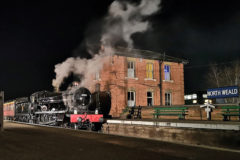
Previous Post
Epping Ongar Railway’s 10th anniversary celebrations!
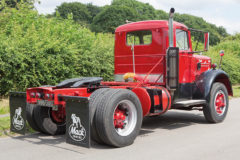
Next Post
1950 Mack LJT conservation



